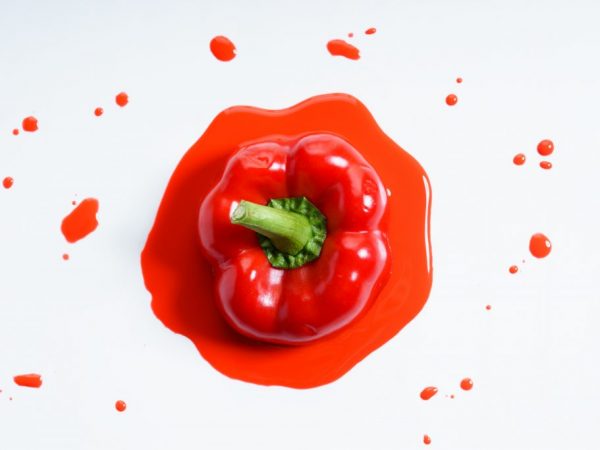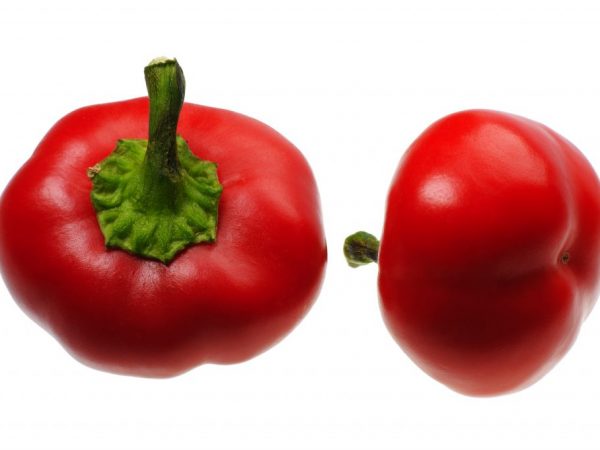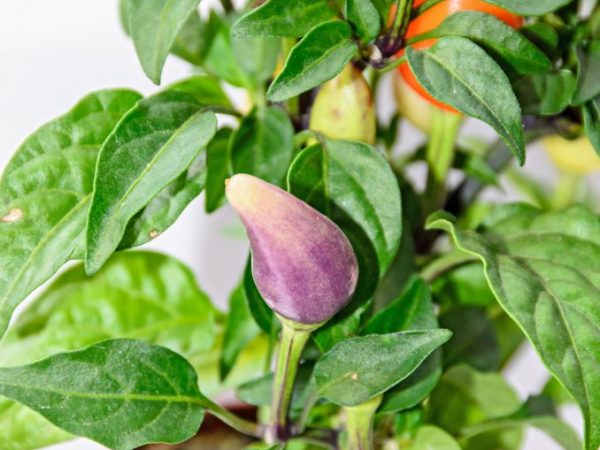Characteristics of the variety of sweet peppers Kolobok
At the beginning of each season, summer residents are faced with a choice of pepper varieties for planting. Bell pepper has not only a bright taste and aroma, but also contains many useful substances. A striking representative of this culture is the Kolobok pepper variety.

Characteristics of the variety of sweet peppers Kolobok
Characteristics of the variety
Pepper Gingerbread man is distinguished by the spherical shape of the fruit, from which it received its famous name.
The description of the variety shows that this species is suitable for growing both outdoors and indoors.
The main characteristics of the variety:
- early maturity, fruit ripening at 120-130 days;
- high yield: from 1 sq. m per season, up to 6 kg of fruits are harvested;
- disease resistance;
- tolerance to temperature changes.
Description of the bush
The bush of the Kolobok variety is half-stemmed, compact, grows small, about 35 cm-55 cm. The bush is covered with dark green leaves. Tomato-like fruits are small, close to the stem. The small size of the bush allows you to plant seedlings more densely, which significantly increases productivity.
Description of fruits
The fruits of the Kolobok sweet pepper are not large in size, but they have a juicy thick pulp.
Pepper Gingerbread Man is ideal for salads, canning and fresh consumption as an independent product.
Description of Pepper Fruit Gingerbread Man:
- spherical shape, slightly flattened;
- size - from 45 mm to 70 mm;
- weight - about 150 g;
- wall thickness - from 9 mm to 15 mm;
- color in a state of technical maturity is light green with a yellow tint;
- the color at the stage of full ripening is dark red or yellow;
- strong aroma and pronounced taste;
- excellent transport portability.
Growing and care

Peppers are very thermophilic
The Kolobok variety loves warmth, so it is grown by seedlings.
Seedling
- The soil for seedlings of sweet peppers is chosen light, non-acidic. You can use small sawdust from fruit trees soaked in a nutrient solution.
- Pepper does not tolerate transplantation, so containers for seedlings are chosen large, better - cassettes or plastic cups with a volume of at least 230 ml.
- Seeds for seedlings are sown from 20 February to mid-March. For its best growth, the temperature is maintained within 26C during the day and 20˚C at night. Sprinkle with warm water.
Place for pepper
- The place for planting pepper should be well lit, protected from the wind. It is best to prepare it in the fall: clean it from old plants, apply organic fertilizers and dig it up.
- The soil should be fertile, water and air permeable, non-acidic. The increased acidity of the soil is corrected by introducing slaked lime into the soil at the rate of 1 kg per 1 sq. m. River sand is added on clay soils, and black soil on sandy soils.
Disembarkation
- In mid-May, seedlings are planted in greenhouses and hotbeds. It is planted in open ground in late May - early June.
- In order not to thicken the planting, observe the distance between the seedlings. The landing pattern is 45 x 45 cm.
- Humus or wood ash is added to the holes before planting, but not fresh manure: it burns the roots of the pepper.
- When planting, the seedlings are not buried in the holes.
Care
- Watering is carried out regularly, 3-4 times a week with warm, settled water in the evening.
- The soil is loosened to provide oxygen to the roots, otherwise they take nutrients from the aboveground part. The plant withers and dies.
- To maintain soil moisture, mulching is performed. Sawdust, moss or grass are suitable for this. Also, this procedure is a preventive measure against pests.
- Throughout the growing season, Kolobok pepper is fed with nutrients. During growth, nitrogen fertilizers are applied 2-3 times. During flowering and fruiting - potassium-phosphorus.
- The Kolobok bush is compact and does not need a garter and molding.
Pests and diseases

It is very difficult to fight disease
If pests have started on the pepper, it is quite difficult to deal with them, it is easier to prevent their appearance.
Pest prevention
- before sowing, the seeds are disinfected: they are kept for 20 minutes in a manganese solution, washed;
- observe the rule of crop rotation, do not plant peppers in the beds where potatoes and tomatoes grew;
- in the fall, remove and burn all plant residues on the site;
- weeds are regularly harvested not only in the beds, but also on the paths.
Pests
Peppers growing in open areas are most susceptible to the appearance of pests. Pests include:
- aphids feed on plant sap, as a result of which the leaves turn yellow, wrinkle and dry out;
- the spider mite, like aphids, feeds on sap, lives on the lower part of the leaf, near the junction of the leaf with the stem you can see a white web;
- the Colorado potato beetle has a convex shape with yellow-black stripes, on its head there is a black triangle, the larvae are red-orange, feeds on leaves;
- white wing;
- a naked slug makes holes in the leaves and fruits, over time, the perforated fruits rot;
- brown bear, up to 5 cm in length, loves dampness, feeds on roots, as a result of which the plant dies.
Pest control
Aphid
The fight against aphids consists in spraying the plant with solutions:
- take 1 glass of ash or tobacco dust and 10 liters of water, insist for a day, add 1 tbsp. l. laundry soap, filter and process leaves and stems;
- take 1 tbsp. l. the drug Keltan or Karbofos, diluted in 10 liters of water; plants cannot be treated with such a solution during flowering.
Spider mite
Control methods:
- leaves and stems are washed with warm water with laundry soap in a ratio of 50 g of soap to 10 liters of water;
- grind 1 tbsp. garlic or onion and 1 tbsp. dandelion leaves, add 10 liters of water, 1 tbsp. soap, filter.
Colorado beetle
Control methods:
- if there are few beetles, they are collected by hand in jars filled with kerosene;
- the bushes are sprayed with a solution of 1 ml of the Komandor preparation and 10 liters of water.
Whitefly
Control methods:
- the leaves are washed with warm water, the soil is loosened, add sand or humus 2 cm thick into it;
- the plant is sprayed with a solution of Verticillin in a proportion of 100 ml per 10 l of water; the procedure is carried out 3 times within 10 days, but no later than 2 days before harvesting.
Naked slugs
Control methods:
- weeds are regularly weeded;
- the soil is treated with quicklime every two days, 3 times a day;
- metaldehyde granules are laid out in the calculation of 5 pieces. for 1 sq. m.
Medvedka
Ways to fight:
- at the end of May, the soil is loosened to destroy the larvae;
- they arrange traps: they dig holes 40 cm deep and put manure there, in early spring it is removed and destroyed;
- places where the bear congestion is treated with naphthalene.
The Kolobok variety has good immunity, therefore it practically does not get sick, especially if preventive measures are taken. For the prevention of diseases, a few days before planting the seedlings, the site is treated with a 3% solution of copper sulfate.
Conclusion
Gingerbread man is one of the most common sweet peppers. It is great for stuffing due to its small size.


